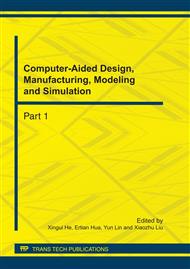p.56
p.60
p.67
p.72
p.77
p.82
p.88
p.93
p.99
Modeling and Simulation of Deceleration-Oriented Braking Control on Freight Train
Abstract:
Based on the original Electronically Controlled Pneumatic (ECP) brake system of the heavy-haul freight train and SIMULINK, in this paper we establishes the vehicle longitudinal dynamics model and a new braking control mode (deceleration control) in order to reduce the shock caused by the impulse of the vehicles to the coupler so as to lessen the danger of coupler fracture. The author adopts the Smith-PID control compensating method as the core of the deceleration control so as to control the vehicle longitudinal dynamics model. Furthermore, by calculating the variation of the coupler force and comparing with the results of the original braking force control method, theoretically we can draw conclusion that deceleration control has high feasibility and superiority.
Info:
Periodical:
Pages:
77-81
Citation:
Online since:
August 2011
Authors:
Keywords:
Price:
Сopyright:
© 2011 Trans Tech Publications Ltd. All Rights Reserved
Share:
Citation:


